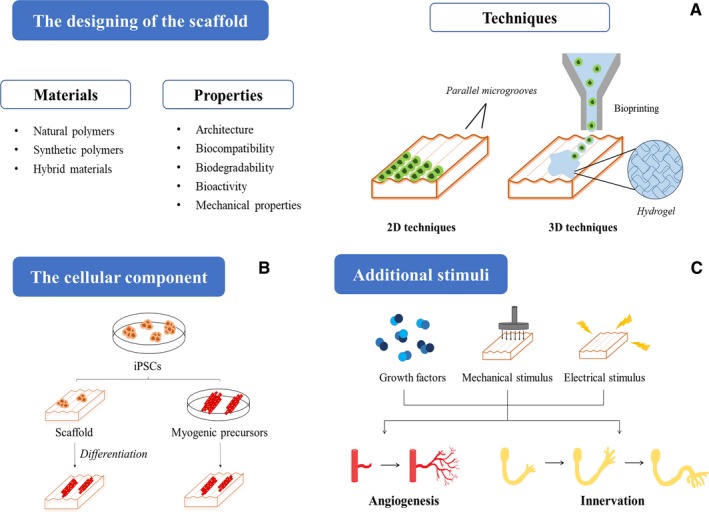Figure 3.

Schematic representation of the three main pillars of skeletal muscle tissue engineering based on iPSCs. A, The scaffolds should present the right properties to ensure the correct engineering of the tissue, and they can be fabricated using natural, synthetic or hybrid polymers. In the image it is highlighted the main two‐dimensional and three‐dimensional techniques that can be employed for the generation of the scaffolds. B, iPSCs can be implemented to this technology following two strategies: either being seeded directly into the scaffold and then differentiated there, or cultivated in the scaffold once differentiated into myogenic precursors. C Finally, with the purpose of achieving vascularization and innervation in the construct, it is possible the addition of bioactive factors, as well as the implementation of mechanical or electrical stimuli
